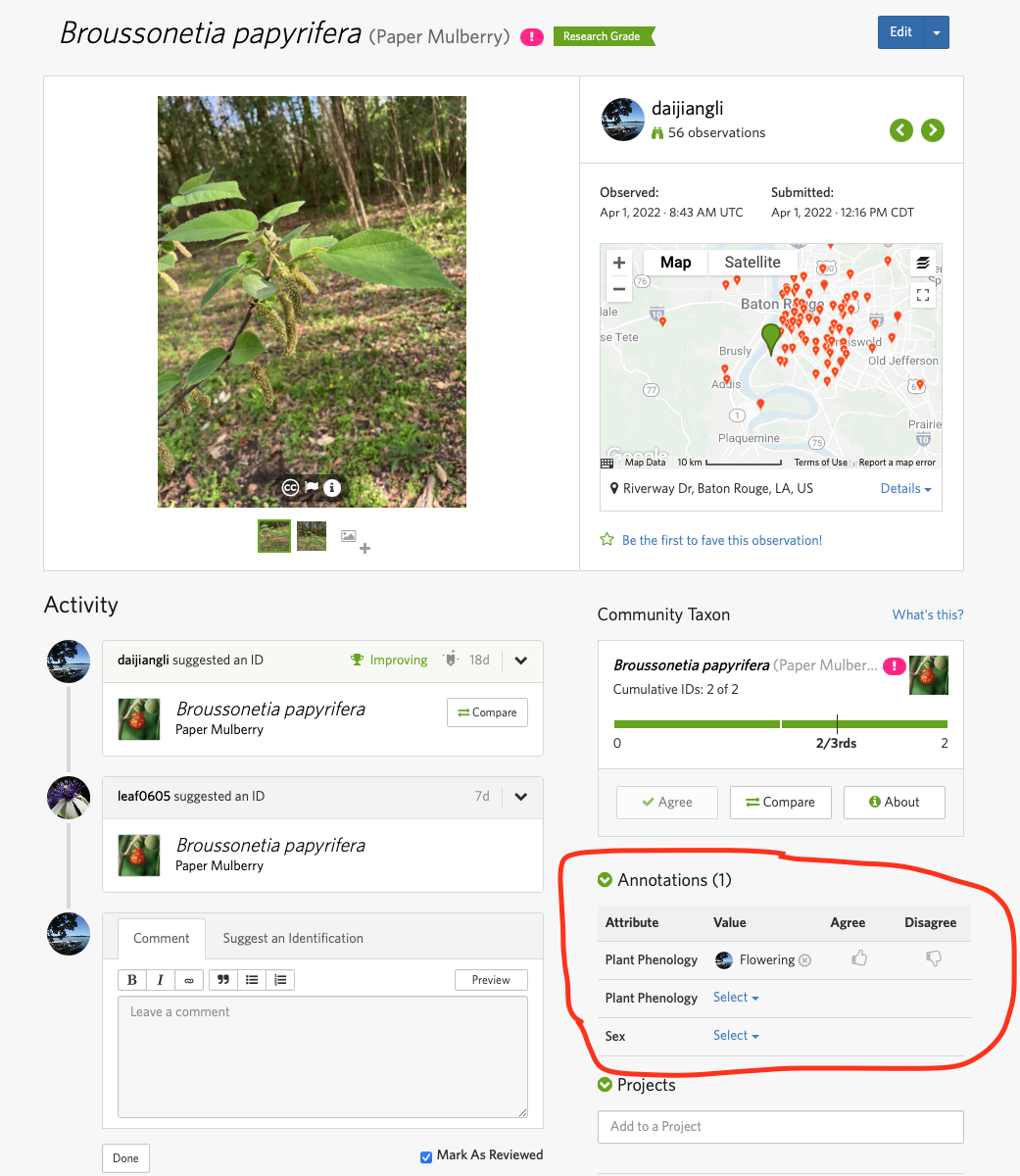Extra Credit
After discussion, we decide to offer 10 points of extra credit for all students in spring 2023. To earn these extra points, students need to participant the 2023 city nature challenge. City nature challenge provides an exciting way to encourage us to connect with nature and to put our amazing biodiversity in cities on maps. This year’s city nature challenge takes place in 2 parts:
- April 28 to May 1: taking pictures of wild plants and animals
- May 2 to May 7: identifying what was found
Before going out during April 28 to May 1, you can download and install the iNaturalist App on your phone from App stores (Apple AppStore or Google Play), create an account, sign in, and then you are ready. During this time window (not before or after; but you are encouraged to practice it before the date, though that observations won’t be counted for the extra credit; even after the city nature challenge is over, I’d encourage you to continue to document life), go out and take observations with your phone and upload to iNaturalist. All observations during this time period will be automatically accounted for by the city nature challenge project.
In addition, I have also created a project named as LSU BIOL 4253 Principles of Ecology. On your phone, when you open the iNaturalist App, on the bottom right, you should be able to see the “project” tab, click that and search for this project and then join it. When you upload your observations, they should be included in this project later.
-
Open the iNaturalist app, at the bottom center, click the
Observebutton -
You can choose different options from there, the most common ones are
Camera(to take new pictures) andPhoto Library(to upload existing pictures) -
After taken the pictures or selected the existing pictures, pay attention to the three parts highlighted in the picture below

- The first part is to see potential identification of the observation; the app normally is quite good with the identifications at least to the genus level. Click on the top suggestions, look at the descriptions and pictures, then select the most matched suggestion in your opinion
- Mark whether your observation is Captive or Cultivated. Default is
No; Captive or Cultivated species should be marked as “Yes” (No pets please, no container plants, no garden plants, no animals from zoo) - Make sure the location information is correct
- If you can select the
LSU BIOL 4253 Principles of Ecologyproject, do it. Otherwise, no worries
Only observations that you personally took around Baton Rouge during the time period specified above will count. No photos from your friends, relevant, internet, etc.
Images downloaded from internet will be presented as evidence of plagiarism and will be reported to the University.
If you use Andriod, you can also make annotations about the phenology of your observation. This can be very helpful for researchers. For example, if you took a picture of a flower, you can add its phenology as “flowering”. Currently, only plant reproductive phenology annotations are available.
If you use an iPhone, you can go to https://www.inaturalist.org/home once you have uploaded your observations from your phone. Then login to the website, go to your observations, choose those with flowers or fruits, and then add annotations there.

The maximum extra points you can get is 10. To get these 10 points, you need to record at least 50 species (0.2 point per species; they can be any wild species, plants, insects, birds, mammals, worms, etc.). You need 50 species, not just 50 observations to get the full extra credit; this is because sometimes multiple observations can be about the same species. Don’t just record them around LSU. Try to go out a little bit further. May be take a hike around a park, etc.
I will calculate your extra score using the 0.2 point per species rule (maximum at 10, but don’t let this stop your recording!). If you recorded 25 species, you can get 5 points. After done, you need to email me your iNaturalist account name and a screenshot of the summary of your observations (with number of observations, number of species, etc.) so that I can calculate your extra points.
This extra scores will be added to your total scores before taking the average to get your final score. For example, if your total score after dropping your lowest exam score (3 exams + final project) is 370, and if you get all 10 extra points, then your total score would be 370 + 10 = 380; and your final score would be 380/4 = 95.
Again, this is optional. You don’t need to do this if you decide to not have this extra credit. But wouldn’t it be nice to go outside while can contribute to community/citizen science programs and earn some extra credit??
